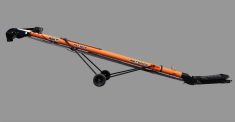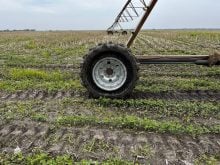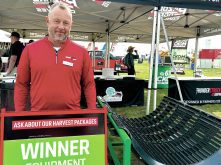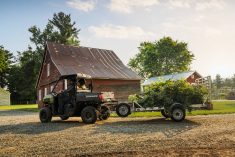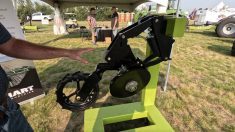We’ve all heard a lot about the development of autonomous farm equipment, but what, exactly, is going on in other sectors? The answer is, quite a lot. A number of presenters at this year’s Consumer Electronics Show in January revealed what their companies are doing as they advance the technology. Here’s a sampling of what was discussed at the event.
Indy autonomous challenge
Safely operating a machine at eight kilometers per hour in an open area is a much simpler task than navigating a highway crowded with other traffic at 100 km/h. True on-road autonomous vehicle operation remains a concept for the future. However, in an effort to help increase the speed of technological advancement in that area — both figuratively and literally — a new competition will soon make history.
Read Also

Claas brings 1000 Series SP forage harvesters to Canada
In mid-August, Claas unveiled its new line of Jaguar forage harvesters at an event in Visalia, California, deep in the heart of that state’s dairy region.
The Indianapolis Motor Speedway is hosting an all-autonomous 20-lap race at the famous “Brickyard” in October. Typically, race cars in the Indianapolis 500 hit speeds of 240 miles per hour, when drivers are in control. And organizers expect to see similar speeds with computers steering the cars. Thirty teams from universities all around the world will participate.
“The Indy Autonomous Challenge is unlike any other challenge,” said Doug Boles, president, Indianapolis Motor Speedway, during a presentation at the CES. “All these universities from around the world with the next generation of the brightest minds — and some of them are going to look back and say it started at the Indianapolis Motor Speedway and the Indy Autonomous Challenge.”
“University students look at this problem with fresh, new eyes,” said Sebastian Thrun, CEO Kitty Hawk, and member of the team that won the 2005 DARPA Grand Challenge, an autonomous vehicle competition requiring vehicles to navigate a simple course in the Mojave Desert.
“We’ve known for years that competitions can drive innovation,” added Paul Mitchell, president and CEO Energy Systems Network. “We’re still a long way away from having a self-driving car that can drive anywhere and everywhere. We knew there was a major leap that had to be taken.”
“We know competitions are a great place to do this,” said Thrun. “Because once you get competitive, you’ll stop sleeping to ensure you win.”
General Motors
GM revealed it continues to work on autonomous driving technology.
“Leading the charge on self-driving vehicles is ‘Cruise,’” said General Motor’s CEO Mary Barra. “(It’s) a self-driving startup backed by General Motors. Cruise has now reached the point where it has removed the human driver from behind the wheel. It’s now testing fully driverless cars on the streets of San Francisco.”
In 2020 the Cruise Origin, an autonomous, purpose-built, van-like vehicle designed for urban ride sharing was introduced.
“What matters to us is building tens of thousands, or even hundreds of thousands of Cruise Origins, so all those vehicles can be out there touching people’s lives in a form of transportation that is safer, more affordable and sustainable,” said Kyle Vogt, co-founder and CTO at Cruise.

Caterpillar
Caterpillar had a presence at the CES this year, too. And it pointed out it has been working on autonomous equipment for 30 years. It has already introduced remotely controlled or fully autonomous equipment to the mining sector, most notably the 797F mine truck, like those used in the Oil Sands projects.
Cat says autonomous 797Fs, which weigh in at more than 687 tons each when loaded, have collectively moved 4.91 trillion pounds of material. It claims they cost 20 per cent less to operate than one with a real driver, and are 30 per cent more efficient. And all of that has happened with no reported lost-time incidents.
“(Autonomy) is what our customers need,” said Denise Johnson, group president, resource industries at Caterpillar, during an online presentation at the CES. “Technology and autonomy are game changers that take productivity and safety to unprecedented levels.”





